 We hear it all the time…
We hear it all the time…
support local family farmers,
connect with your community,
know where your food comes from,
and know your farmer!
There is actually a perfect and easy way to do all of these,
shop at the farmer’s market!
Whether you are an avid farmer’s market shopper or have never gone to the market before, we hope these ideas and tips will help make the most out of your farmer’s market shopping experience!
- Enjoy the season! Keep in mind that you won’t find everything you might find at the grocery store (which is a good thing!) because what’s available is what’s “in season” or growing locally at that time. In the mid-west in early Spring, you will find greens and tomatoes that have been grown in greenhouses and very soon you will begin to see asparagus, radishes, rhubarb and other produce.
 REAL flavors! Once you begin to enjoy the fresh produce and other foods from the farmer’s market, you will notice the amazing difference in taste! For example, fresh in-season tomatoes from the market don’t even compare to the ones at the store – you know, the ones with the stickers on them. Do a taste test and see how noticeable the difference is!
REAL flavors! Once you begin to enjoy the fresh produce and other foods from the farmer’s market, you will notice the amazing difference in taste! For example, fresh in-season tomatoes from the market don’t even compare to the ones at the store – you know, the ones with the stickers on them. Do a taste test and see how noticeable the difference is!
- Nutrient rich! Produce begins to lose its nutritional value once it is harvested or picked. The produce at the market is often harvested just a day or two before you buy it (sometimes it is even harvested the day of the market). This means it’s not only more flavorful, but is also much more nutritious than something that has been on a truck or in a distribution warehouse for several days.
- Best time to go? If you want the best of what’s available and the best variety, GO EARLY! Items that have limited quantities are often gone within the first hour. If you go towards the end of the market, the variety won’t be as great, but you might be able to get a deal on what’s left.
- Where to go? To find the local farmers’ markets in your area, try going to https://www.localharvest.org!
 Bring cash! Although there are a few farmers who accept credit cards, you will be better off to bring cash – and small bills if you have them!
Bring cash! Although there are a few farmers who accept credit cards, you will be better off to bring cash – and small bills if you have them!
- Bring your own bags! This is a perfect opportunity to use your favorite bags to load up on your market finds! If you are like us, just keep the bags in the trunk so they are always there when you need them!
- Bring your kids! Although some of you may be thinking…I’m not so sure that is a good idea…exposing your kids to the farmer’s market is great for them and can really have a lasting impression. This is a perfect way to show them where their food comes from and let them meet the farmers. Our kids love knowing we are eating Phil’s chicken or Karen’s greens. As you know, if kids see it is important to you, they will think it is important too! If you haven’t already, check out the Eat REAL America coaching tip on selling the concept of REAL food to kids.
- Keep them fresh! If you can, plan accordingly so you can make a trip back home to put your fresh market buys in the frig – don’t let that beautiful romaine lettuce wilt in the hot car! Or bring a cooler and ice packs in your car to buy some time until you can get back home. You don’t want your farm fresh goods and your money to go to waste!
- Walk the market first! If you have time, walk the market first to check it out, then go back and make your purchases. This way you don’t miss anything and you can decide what you like best! You might also consider buying heavier items (like watermelons) last so you don’t have to lug them around the market.
 Talk to the farmers! Our local farmers are passionate and dedicated and would love to visit with you. Ask questions and seek their advice – they are a great resource to learn more about how the food is grown and what to do with it! (Honestly, the farmers were a HUGE help to us as we learned about different foods we had never tried before!)
Talk to the farmers! Our local farmers are passionate and dedicated and would love to visit with you. Ask questions and seek their advice – they are a great resource to learn more about how the food is grown and what to do with it! (Honestly, the farmers were a HUGE help to us as we learned about different foods we had never tried before!)
- Try it and be adventurous! If you see a sample of something, try it! Also, if you see something that looks interesting, but you have never tried it before, buy it and make something with it. This is the perfect opportunity to try something new! Chances are, if you see something you like, we will have a recipe for it on eatrealamerica.com. If we don’t, let us know and we will come up with one!
Here is a little more info about a few items you will be able to find at the farmer’s market in the Spring!
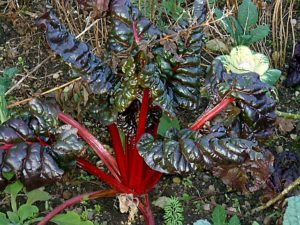 RHUBARB: very similar to celery but red and green in color, you want to make sure and buy it while it is still firm and crisp. Rhubarb is very nutritious and high in calcium and vitamins. The stalks of the rhubarb are the part you eat; the leaves contain an oxalic acid and should not be eaten. Rhubarb has a lemony tart flavor which is why it is normally cooked, baked or stewed. It is typically paired with other fruits (often strawberries) to balance out its tartness such as in pies and cobblers. However, rhubarb can also be cooked and used in salads or in sauces and spreads. In the next few weeks, we will provide some great recipes for rhubarb on eatrealamerica.com!
RHUBARB: very similar to celery but red and green in color, you want to make sure and buy it while it is still firm and crisp. Rhubarb is very nutritious and high in calcium and vitamins. The stalks of the rhubarb are the part you eat; the leaves contain an oxalic acid and should not be eaten. Rhubarb has a lemony tart flavor which is why it is normally cooked, baked or stewed. It is typically paired with other fruits (often strawberries) to balance out its tartness such as in pies and cobblers. However, rhubarb can also be cooked and used in salads or in sauces and spreads. In the next few weeks, we will provide some great recipes for rhubarb on eatrealamerica.com!
MICROGREENS: good things come in small packages, right?!
Microgreens have been gaining popularity and you may have seen them appear on salads or as a final touch to top various dishes. A small amount of microgreens packs a ton of flavor. This means that it doesn’t take much to get their great nutritious benefits too! Microgreens can come from almost any edible leafy green vegetable or herb such as kale, arugula, chard, cilantro, basil, or parsley just to name a few. They are grown in soil (different than sprouts, which are grown in water) and are harvested when the first set of true leaves sprout. You use them by simply cutting them off above the soil level and eat them right away on top of salads or anything you want to give an extra punch of flavor!
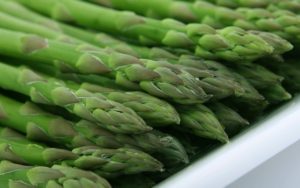 ASPARAGUS: You know Spring is officially here when you see asparagus at the Farmer’s Market!
ASPARAGUS: You know Spring is officially here when you see asparagus at the Farmer’s Market!
Asparagus is one of those vegetables that has HUGE health benefits. Besides being high in fiber, vitamins, and minerals, asparagus also contains folate which helps prevent aging and helps our brains stay sharp! It also contains rutin, which helps strengthen capillary walls. It is also thought that eating asparagus helps breakdown carcinogens in our bodies. Asparagus is great raw or cooked. It doesn’t take long at all to cook and is best when it still has a crunch! A great way to store asparagus is to place the stalks upright in a bowl with a little water in the refrigerator. You want the ends of the stems submerged in the water. This will keep them firm and crisp longer.
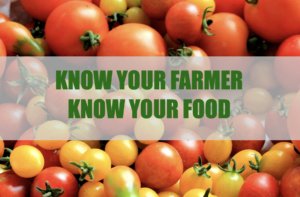 Check out our coaching tip “Your Guide to What Is In Season Right Now” for more about what is in-season and when!
Check out our coaching tip “Your Guide to What Is In Season Right Now” for more about what is in-season and when!
If you have farmer’s market tips and advice we can share with other Eat REAL America members, please let us know!
(“Shake the Hand That Feeds You” – quote by Michael Pollan)
 LEARN MORE ABOUT THE NAPKIN!
LEARN MORE ABOUT THE NAPKIN!
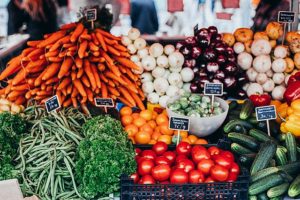
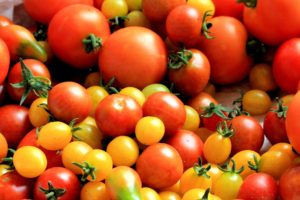

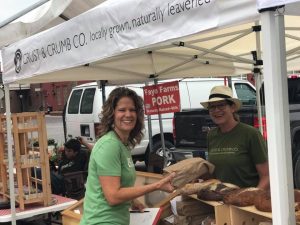
Leave A Comment